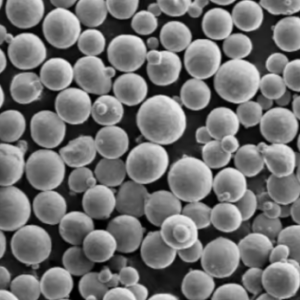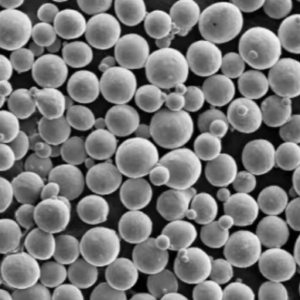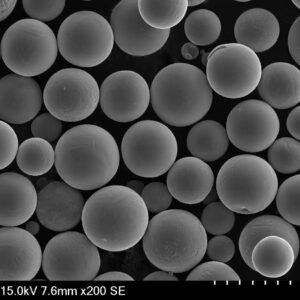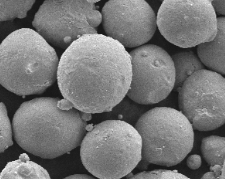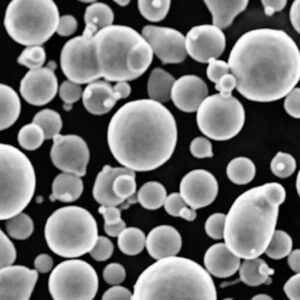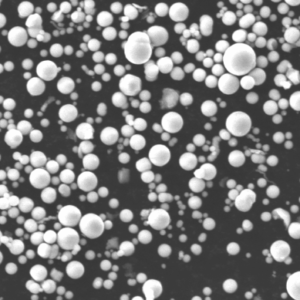Overview of Laser Engineering Net Shaping (LENS)
Laser Engineering Net Shaping (LENS) is a groundbreaking technology in the realm of additive manufacturing. It involves using high-powered lasers to fuse powdered materials layer by layer, creating complex and precise components directly from a digital model. This technology has revolutionized various industries by providing a cost-effective and efficient method to produce parts with intricate geometries and high-performance materials.
LENS is particularly valued for its ability to repair and modify existing components, extending their life and performance. The versatility and precision of LENS make it suitable for a wide range of applications, from aerospace to medical implants, and from automotive to tooling.
In this comprehensive guide, we’ll dive deep into the specifics of LENS technology, exploring its metal powder models, compositions, properties, and applications. We’ll also look at the advantages and limitations of LENS, and provide a detailed comparison of different metal powders used in this process.
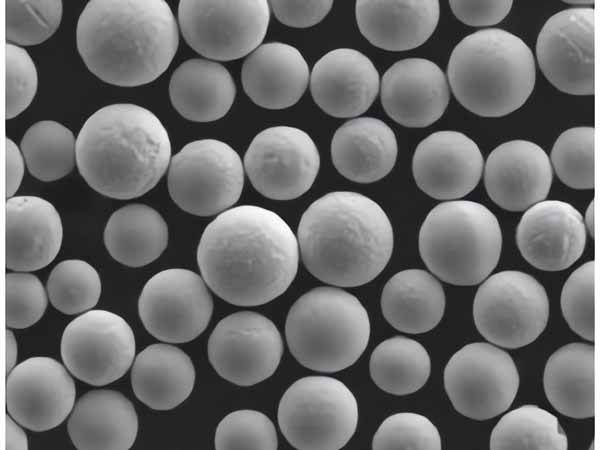
Composition of Laser Engineering Net Shaping (LENS) Metal Powders
Understanding the composition of metal powders used in LENS is crucial for selecting the right material for specific applications. Here are ten specific metal powder models, each with unique properties and uses.
| Metal Powder Model | Composition | Properties | Characteristics |
|---|---|---|---|
| Inconel 718 | Ni-Cr-Fe alloy | High strength, corrosion resistance, good weldability | Suitable for high-temperature applications, aerospace, and gas turbines |
| Ti-6Al-4V | Ti-Al-V alloy | High strength-to-weight ratio, excellent biocompatibility | Used in medical implants, aerospace, and automotive |
| Stainless Steel 316L | Fe-Cr-Ni-Mo alloy | Corrosion resistance, high ductility, non-magnetic | Ideal for marine applications, food processing, and medical instruments |
| Maraging Steel | Fe-Ni-Co-Mo alloy | Ultra-high strength, toughness, good weldability | Preferred for aerospace, tooling, and high-stress applications |
| Aluminum 6061 | Al-Mg-Si alloy | Lightweight, good corrosion resistance, excellent machinability | Common in automotive, aerospace, and consumer electronics |
| Cobalt Chrome (CoCr) | Co-Cr alloy | High wear resistance, biocompatibility, strength | Used in medical implants, dental prosthetics, and high-wear components |
| Nickel 625 | Ni-Cr-Mo-Nb alloy | Corrosion resistance, high strength, good weldability | Suited for chemical processing, marine, and aerospace applications |
| Tool Steel H13 | Fe-Cr-Mo-V alloy | High toughness, wear resistance, good thermal stability | Ideal for molds, dies, and high-temperature tools |
| Copper (Cu) | Pure copper | Excellent conductivity, malleability, antimicrobial properties | Used in electrical components, heat exchangers, and antimicrobial surfaces |
| Tungsten (W) | Pure tungsten | High density, melting point, and strength | Suitable for radiation shielding, aerospace, and high-temperature applications |
Applications of Laser Engineering Net Shaping (LENS)
LENS technology is incredibly versatile, finding applications across various industries. Here’s a detailed look at where and how LENS is utilized.
| Application | Description | Example Industries |
|---|---|---|
| Aerospace Components | Manufacturing and repairing high-stress, high-temperature parts | Aerospace, Defense |
| Medical Implants | Custom implants and prosthetics tailored to individual patients | Healthcare, Dentistry |
| Automotive Parts | Producing lightweight, durable components for vehicles | Automotive, Motorsports |
| Tooling and Molds | Creating high-precision tools and molds with complex geometries | Manufacturing, Plastics |
| Oil and Gas | Fabricating corrosion-resistant parts for harsh environments | Energy, Marine |
| Consumer Electronics | Developing small, intricate components for electronic devices | Electronics, Telecommunications |
| Research and Development | Prototyping and testing new materials and designs | Academia, Research Institutions |
| Art and Jewelry | Crafting unique, custom designs with fine details | Fashion, Art |
| Construction | Building components with high structural integrity and durability | Construction, Architecture |
| Defense | Producing parts with high strength and reliability for military applications | Defense, Security |
Specifications, Sizes, Grades, and Standards of LENS Metal Powders
To ensure the quality and performance of metal powders used in LENS, they must adhere to specific specifications, sizes, grades, and standards.
| Metal Powder | Specifications | Sizes | Grades | Standards |
|---|---|---|---|---|
| Inconel 718 | ASTM B637, AMS 5662 | 15-53 microns | Grade 1, 2 | ASTM F3055 |
| Ti-6Al-4V | ASTM B348, AMS 4928 | 20-63 microns | Grade 23 | ASTM F2924 |
| Stainless Steel 316L | ASTM A240, AMS 5507 | 10-45 microns | Grade 1 | ASTM F138 |
| Maraging Steel | AMS 6512 | 20-53 microns | Grade 250, 300 | ASTM F258 |
| Aluminum 6061 | ASTM B211, AMS 4027 | 15-45 microns | Grade T6 | ASTM B209 |
| Cobalt Chrome (CoCr) | ASTM F1537 | 20-63 microns | Grade F75 | ASTM F75 |
| Nickel 625 | ASTM B443, AMS 5666 | 15-45 microns | Grade 1, 2 | ASTM F3056 |
| Tool Steel H13 | ASTM A681, AMS 6487 | 10-53 microns | Grade H13 | ASTM A681 |
| Copper (Cu) | ASTM B170, AMS 4501 | 15-45 microns | Grade C11000 | ASTM B152 |
| Tungsten (W) | ASTM B777 | 20-63 microns | Grade 1 | ASTM B777 |
Suppliers and Pricing Details of LENS Metal Powders
To facilitate sourcing, here are some notable suppliers of LENS metal powders along with their pricing details.
| Supplier | Metal Powders Available | Pricing (USD/kg) | Location |
|---|---|---|---|
| Höganäs AB | Inconel 718, Stainless Steel 316L, Tool Steel H13 | $50 – $150 | Sweden |
| Carpenter Technology | Ti-6Al-4V, Maraging Steel, Cobalt Chrome | $100 – $300 | USA |
| GKN Additive | Aluminum 6061, Nickel 625, Copper | $40 – $120 | Germany |
| Sandvik Osprey | Inconel 718, Stainless Steel 316L, Cobalt Chrome | $60 – $180 | UK |
| AP&C (GE Additive) | Ti-6Al-4V, Nickel 625, Tool Steel H13 | $90 – $250 | Canada |
| LPW Technology (Carpenter) | Maraging Steel, Aluminum 6061, Tungsten | $80 – $220 | USA |
| Praxair Surface Technologies | Stainless Steel 316L, Inconel 718, Copper | $70 – $170 | USA |
| Aubert & Duval | Tool Steel H13, Cobalt Chrome, Ti-6Al-4V | $110 – $280 | France |
| Oerlikon AM | Nickel 625, Aluminum 6061, Stainless Steel 316L | $50 – $130 | Switzerland |
| Advanced Powder & Coatings (AP&C) | Ti-6Al-4V, Inconel 718, Tool Steel H13 | $95 – $260 | Canada |
Pros and Cons of Laser Engineering Net Shaping (LENS) Metal Powders
Each type of metal powder used in LENS has its own set of advantages and limitations. Here’s a comparative look.
| Metal Powder | Advantages | Limitations |
|---|---|---|
| Inconel 718 | High strength, excellent high-temperature performance | Expensive, difficult to machine |
| Ti-6Al-4V | Lightweight, excellent biocompatibility | High cost, requires specialized processing |
| Stainless Steel 316L | Corrosion resistance, good ductility | Lower strength compared to other alloys |
| Maraging Steel | Ultra-high strength, good weldability | High cost, limited corrosion resistance |
| Aluminum 6061 | Lightweight, good machinability | Lower strength compared to other high-performance alloys |
| Cobalt Chrome (CoCr) | High wear resistance, biocompatibility | High cost, brittleness |
| Nickel 625 | Excellent corrosion resistance, good weldability | Expensive, challenging to process |
| Tool Steel H13 | High toughness, wear resistance | Requires post-processing heat treatment |
| Copper (Cu) | Excellent conductivity, antimicrobial properties | Soft, prone to deformation |
| Tungsten (W) | High density, melting point | Brittle, difficult to process |
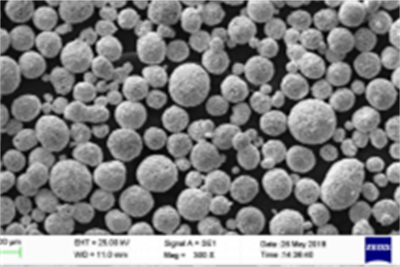
FAQ
| Question | Answer |
|---|---|
| What is LENS technology? | LENS (Laser Engineering Net Shaping) is an additive manufacturing technique that uses lasers to fuse metal powders into precise, complex shapes. |
| What materials can be used in LENS? | A wide range of metals, including Inconel, titanium, stainless steel, aluminum, cobalt chrome, and more. |
| What are the benefits of using LENS? | LENS allows for high precision, reduced material waste, repair of existing parts, and the ability to create complex geometries. |
| What industries use LENS technology? | Aerospace, medical, automotive, tooling, oil and gas, and more. |
| How does LENS compare to other additive manufacturing methods? | LENS offers higher precision and material versatility compared to some other methods but can be more expensive and complex. |
| What are the limitations of LENS? | High cost of equipment and materials, need for specialized knowledge and post-processing requirements. |
| Can LENS repair existing parts? | Yes, LENS is highly effective in repairing and modifying existing components, extending their lifespan. |
| What is the typical size range for LENS metal powders? | Generally between 10 to 63 microns, depending on the material and application. |
| Are there any environmental benefits to using LENS? | Yes, LENS reduces material waste and can lower the carbon footprint associated with traditional manufacturing. |
| Where can I buy LENS metal powders? | Many suppliers, including Höganäs AB, Carpenter Technology, GKN Additive, Sandvik Osprey, and more, offer a range of metal powders suitable for LENS. |
Conclusion
Laser Engineering Net Shaping (LENS) is a transformative technology that continues to push the boundaries of what’s possible in additive manufacturing. From aerospace to medical implants, and from automotive parts to tooling, the applications of LENS are vast and varied. By understanding the specific metal powders used in LENS, their compositions, properties, and applications, businesses can make informed decisions that maximize the benefits of this cutting-edge technology.
As LENS technology evolves, it promises to deliver even greater efficiencies, capabilities, and innovations, making it an indispensable tool in modern manufacturing. Whether you’re a seasoned engineer or new to the world of additive manufacturing, LENS offers exciting opportunities to explore and exploit.

